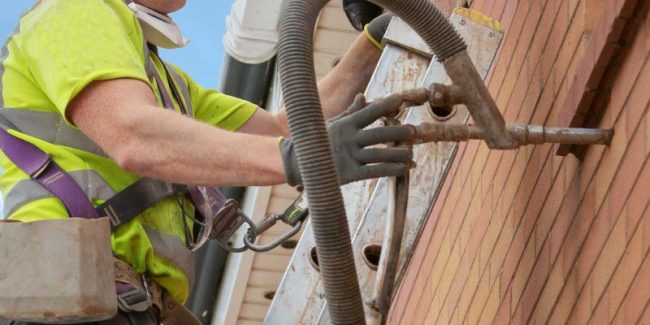Making your home warm, energy-efficient, and comfortable is a priority for every Irish homeowner. One of the most effective ways to achieve this is by installing full fill cavity wall insulation. It not only keeps your home cosy but also helps you save money on energy bills. In this guide, we will explain what full fill cavity wall insulation is, how it works, its benefits, and why it is an excellent choice for homes across Ireland.
What is Full Fill Cavity Wall Insulation?
Full fill cavity wall insulation is a method of filling the entire cavity space between the inner and outer walls of a house with insulating material. This helps prevent heat loss, keeping the warm air inside during winter and reducing heat from entering during summer.
In Ireland, where the weather can be cold and damp for much of the year, good wall insulation is essential to maintain a comfortable indoor temperature and reduce heating costs.
How Does It Work?
Most houses built after the 1920s have a cavity wall structure – two walls with a small gap (cavity) in between. Without insulation, heat can easily escape through this cavity, causing energy loss.
Full fill cavity wall insulation works by filling this gap with an insulating material such as mineral wool, polystyrene beads, or foam. This creates a thermal barrier, preventing heat transfer and making your home more energy-efficient.
Benefits of Full Fill Cavity Wall Insulation

- Better Energy Efficiency
Insulation reduces heat loss by up to 35% through walls, helping you maintain a warm home with less energy. - Lower Heating Bills
Since your home retains more heat, you will spend less on heating, which is especially important with rising energy costs in Ireland. - Enhanced Comfort
No more cold spots or draughty walls – your home will feel warmer and cosier throughout the year. - Noise Reduction
Insulating your walls also helps reduce outside noise, creating a quieter indoor environment. - Environmentally Friendly
Using less energy for heating reduces carbon emissions, helping to protect the environment.
Types of Materials Used
- Mineral Wool – A common choice for Irish homes, known for its thermal and sound insulation properties.
- Polystyrene Beads – Lightweight and moisture-resistant, ideal for damp areas.
- Foam Insulation – Expands to fill gaps completely, offering excellent coverage.
Is Your Home Suitable for Full Fill Cavity Wall Insulation?
Not every house is suitable for this type of insulation. Before installation, a professional assessment is necessary. Factors include:
- The age of the house
- Wall structure and cavity size
- Existing damp or moisture issues
- Accessibility for installation
Houses built after the 1980s are often already insulated, but older homes in Ireland may require an upgrade.
Installation Process
- Survey & Inspection – A professional checks your home to ensure it is suitable.
- Drilling Small Holes – Small holes are drilled into the external wall.
- Injection of Insulation – Insulating material is pumped into the cavity space.
- Sealing & Finishing – Holes are filled, and the wall is restored to its original appearance.
This process is quick and usually completed within a day for most houses.
Cost of Full Fill Cavity Wall Insulation in Ireland

The cost can vary depending on the size of your home, the insulation material used, and labour costs. On average, Irish homeowners can expect to pay between €700 and €1,800. However, the savings on energy bills can quickly cover the initial investment.
Government Grants and SEAI Support
The Sustainable Energy Authority of Ireland (SEAI) offers grants to homeowners for insulation upgrades, including cavity wall insulation. This can significantly reduce the cost and make energy-efficient improvements more affordable.
Conclusion
Full fill cavity wall insulation is one of the smartest investments for Irish homeowners. It improves energy efficiency, lowers heating bills, and increases comfort while helping the environment. With available grants and professional installation, it is a cost-effective solution for creating a warmer, more sustainable home.
FAQs
- How long does cavity wall insulation last?
Most types of cavity wall insulation can last for the lifetime of your home if installed correctly. - Will insulation cause damp problems?
Properly installed insulation should not cause dampness. A survey ensures your walls are suitable before work begins. - Can I get a grant for cavity wall insulation in Ireland?
Yes, SEAI offers grants to homeowners to help with insulation costs. - How long does installation take?
For most homes, installation is completed within a day. - Is it worth the investment?
Yes. The energy savings, increased comfort, and available grants make it a worthwhile investment for most Irish households.

